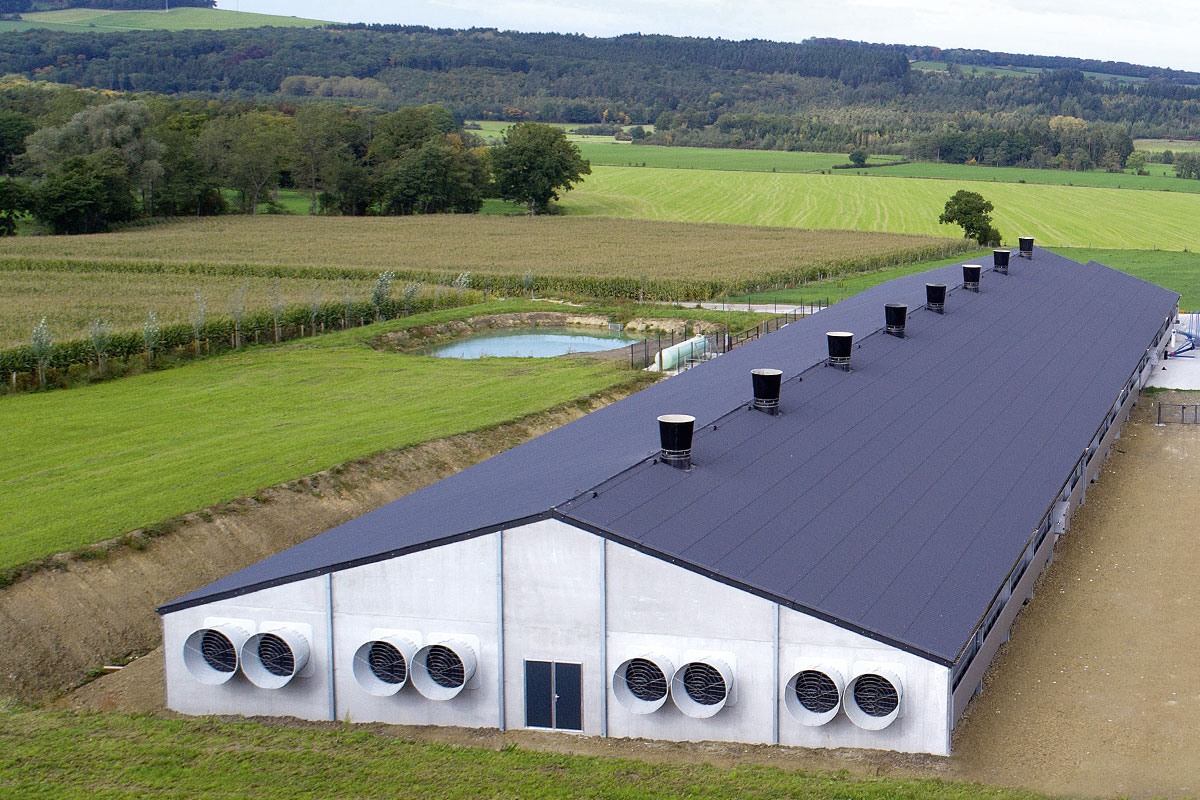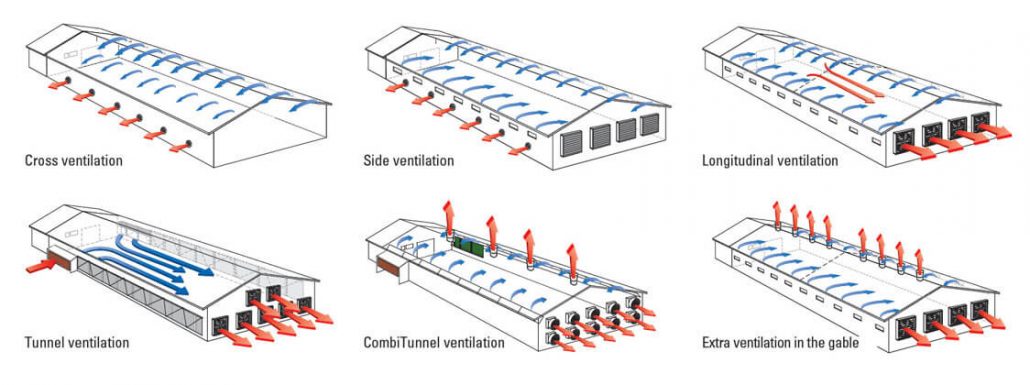
Breeding programa|Normal questions about chicken farm ventilation management
- home
- -
- News

Breeding programa|Normal questions about chicken farm ventilation management
In spring - summer, the external environment changes greatly, chickens are more difficult to raise, and the breeders are also very careful, but problems still occur. In fact, the main reason for the problem is ventilation management and temperature and humidity adjustment. Either high temperature and low humidity, excessive ventilation cause colds or colds; or the ventilation is too small, causing stuffiness and lung injury.
Ventilation, temperature, and humidity are actually contradictory and complementary to each other. The delicate relationship between the three is an important basis for ventilation adjustment. If the coordination is not good, cold stress colds will occur, and the final result will be mixed infection if it continues.
The common problems of spring - summer ventilation in closed chicken houses are as follows:
1. The use of negative pressure
① Listen to others or based on experience, blindly use negative pressure that is not suitable for your chicken coop (smoke experiment)
②Use a negative pressure (the more you use it, the smaller it is) from the brooding to the slaughter.
③Use a negative pressure during the day and night, especially after 15 days (two negative pressures at night than during the day)
④Smoke experiment will not look, the selected negative pressure is not suitable for the current chicken flock (standard smoke state)
⑤The negative pressure does not match the environmental control setting: the opening time in the early stage is short, and the negative pressure can be large; the opening time in the later stage is long, and the negative pressure needs to be small; the external temperature is low, and the negative pressure is large; It can be big or small, the key lies in the opening time of the fan and the number of fans......
2. Environmental control adjustment problem
① Increase the basic fan too early or later (according to the outside world and the situation of the flock, increase the basic fan point)
② Increase the fan too fast when the temperature is over, causing discomfort to the chickens (increase half of the fan, close it in time)
③ The fan starts for a long time, the humidity drops quickly, and the temperature control and room temperature are not adjusted in time
④ The control of the ventilation volume is not appropriate, and the control point of the ventilation volume is not accurate (late and early harvest, rapid heating and cooling)
⑤ Only one time control and one temperature control are set (setting of ventilation level/manual adjustment of time control)
⑥The temperature control value (level temperature control, fan temperature control) is inaccurate, and the fan changes frequently
⑦ Basis for ventilation adjustment, air quality priority in the house: temperature > humidity > CO2 > NH3 > dust.
⑧The mode transition from minimum ventilation to transition ventilation is too fast.
3. Somatosensory temperature control problem
①Never pay attention to humidity and heat compensation: the humidity is low during the day, the effect of artificial humidification is poor, and the room temperature must be increased
② Don’t know the value of damp heat compensation: Humidity 10% affects temperature 1.5°C for 1-2 weeks, 1°C for 3-4 weeks, 0.8°C for 5 weeks
③Do not consider the wind cooling effect: when <2 fans, turn on more than 50%; when ≥2 fans, specific calculations are required
④ Neglecting the influence of the cage layer and the density inside the cage: the temperature of the cage is raised, and the target cooling range after the cage is separated
⑤In the later stage, the relative density of the weight in the cage is high, the heat dissipation is high, and the body feels high. You can't just look at the temperature in the corridor
4. Other issues
① Stress treatment in windy days: linkage/close windows, reduce ventilation, humidify, increase temperature, and windproof cover
② Cold current strikes: above the minimum ventilation, turn on the furnace, pay attention to CO2.
③High temperature treatment: limit temperature in the early stage to ensure ventilation; wind speed + water curtain to lower the temperature in the later stage
④ Relative space for chickens to dissipate heat: there is no partition between the front and rear of the cage machine, resulting in temperature difference and easy to catch a cold
⑤ Occurrence of stuffy chickens: high temperature and high humidity in brooding, low ventilation and low humidity, insufficient fans, high temperature at the rear end, short ventilation time in the later period, and heat in the cage cannot come out. Generally, if the ventilation volume is normal, there will be no stuffiness.
It seems difficult to breed chickens in spring , but as long as you control the key points, avoid risks, and deal with problems, it is not difficult to raise chickens.
The above questions are summarized and described very simply. If you don’t understand something or want to know more details, please follow us, leave us a message, communicate with each other, and learn together.

